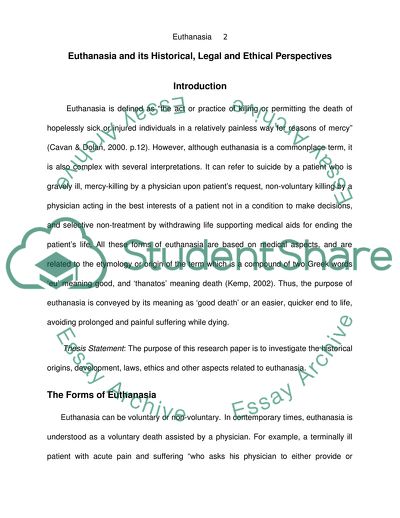Cite this document
(Euthanasia and its Historical, Legal and Ethical Perspectives Essay Example | Topics and Well Written Essays - 1250 words - 5, n.d.)
Euthanasia and its Historical, Legal and Ethical Perspectives Essay Example | Topics and Well Written Essays - 1250 words - 5. https://studentshare.org/sociology/1753115-euthanasia
Euthanasia and its Historical, Legal and Ethical Perspectives Essay Example | Topics and Well Written Essays - 1250 words - 5. https://studentshare.org/sociology/1753115-euthanasia
(Euthanasia and Its Historical, Legal and Ethical Perspectives Essay Example | Topics and Well Written Essays - 1250 Words - 5)
Euthanasia and Its Historical, Legal and Ethical Perspectives Essay Example | Topics and Well Written Essays - 1250 Words - 5. https://studentshare.org/sociology/1753115-euthanasia.
Euthanasia and Its Historical, Legal and Ethical Perspectives Essay Example | Topics and Well Written Essays - 1250 Words - 5. https://studentshare.org/sociology/1753115-euthanasia.
“Euthanasia and Its Historical, Legal and Ethical Perspectives Essay Example | Topics and Well Written Essays - 1250 Words - 5”. https://studentshare.org/sociology/1753115-euthanasia.


